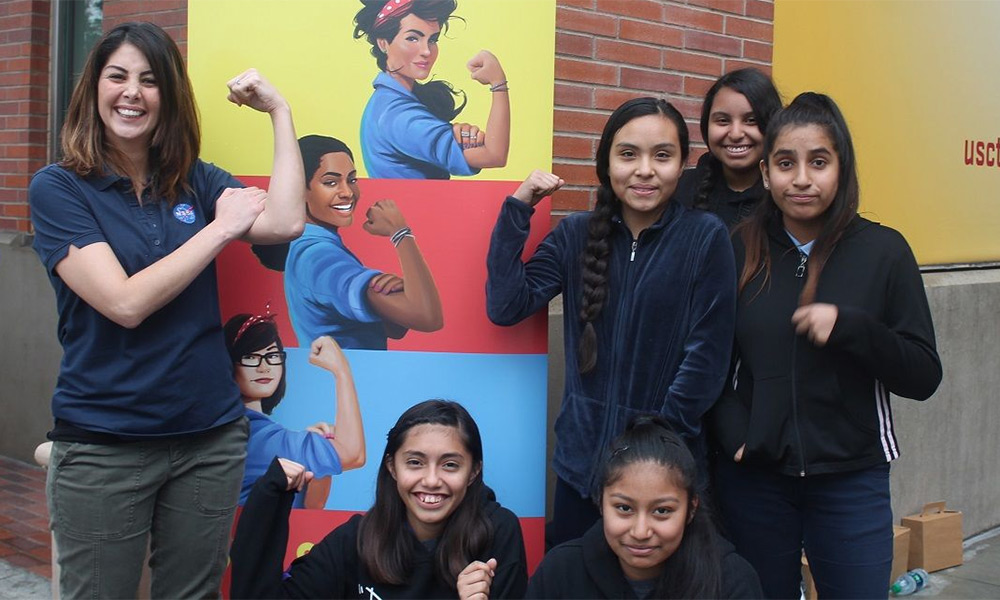
NASA ENGINEER DIANA TRUJILLO ADVOCATES FOR WOMEN OF COLOR IN STEM
Today, she's an award-winning aerospace engineer at the National Aeronautics and Space Administration (NASA). She serves as Mission Lead of the team that developed the robotic arm on the Mars Perseverance rover. Trujillo is a pioneer for other Latinx women to pursue their passion in STEM and break down gender and cultural barriers for other STEM professionals to follow.
Early Life and STEM Education
Trujillo was born in Cali, Colombia, on January 4, 1983. Ever since she was very young, she was fascinated with the universe and dreamed of space exploration. Her interest in STEM education compelled her to question her society's expectations about girls' and women's abilities and career paths, especially in science and other male-dominated fields.
When she was 17 years old, Trujillo immigrated to the United States to escape the economic hardships she faced in Colombia. With only $300 in her pocket, she arrived in Miami. She took English courses at Miami Dade Community College while working as a housekeeper to pay for her studies.
When she was an aerospace engineering student at the University of Florida, Trujillo applied for the NASA Academy at the Goddard Space Flight Center. The Academy is a premier internship program for undergraduate and graduate students interested in aerospace studies. She was the first Hispanic woman accepted into the Academy. Trujillo transferred to the University of Maryland and continued working odd jobs until she earned a Bachelor of Science degree in aerospace engineering in 2007.
Work at NASA
Since 2008, Trujillo has been at NASA's Jet Propulsion Laboratory (JPL), working on noteworthy space missions. As a lead engineer, she spearheaded the development of a dust removal tool for use by the Curiosity rover to dust Mars' surface to allow for more in-depth study of the planet.
Trujillo later served as Telecom Systems Engineer for Curiosity and was responsible for communications between the rover and the Earth-bound NASA scientists. In 2014, she was promoted to Mission Lead, having previously been Flight Ground Systems Engineer and Vehicle System Testbed Mars Surface Lead.
Trujillo currently heads the 45-person engineering team that oversees and maintains the Perseverance rover's robotic arm. When Perseverance landed on Mars on February 18, 2021, she hosted the first Spanish-language NASA transmission of the historic event.
Trujillo has earned many awards for her notable work. In 2014, she was recognized as one of the 20 most influential Latinos in the Technology Industry. She also received the 2017 Bruce Murray Award for Excellence in Education and Public Management. In March of 2021, the Congress of Colombia awarded her the Policarpa Salavarrieta order of merit.
Promoting Hispanics' Interest in STEM
Trujillo advocates extensively for STEM education, particularly for Hispanic women who train to work in male-dominated STEM fields. She claims that the best way to encourage more women of color to pursue STEM is to lead by example. She acknowledges that when she performs her NASA duties, she's doing it for more than just herself.
Trujillo has worked to break glass ceilings for other women scientists and students of color. As previously mentioned, she hosted the Spanish broadcast of the Perseverance landing. The broadcast was called Juntos perseveramos, which means "Together we persevere," and got over 2.5 million views. With her husband, Will Pomerantz, she serves on the Executive Team of the Brooke Owens Fellowship, a paid internship program that mentors women pursuing careers in space exploration and aviation.
References:
- https://www.studentresearchfoundation.org/wp-content/uploads/2020/04/Hispanics_STEM_Report_Final-1.pdf
- https://www.brookeowensfellowship.org/diana-trujillo/
- https://www.goodnewsnetwork.org/diana-trujillo-nasa-role-model-mars/
Also read:
What is STEM education
Rich History of STEM Education in the United States
Automotive Engineering - Future is Self-Driving Automobiles
This article was reviewed and updated on December 18, 2022